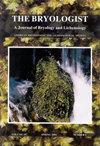So close yet so far: the disjunct global range of Orthotrichum consobrinum (Orthotrichaceae) includes North America
IF 1.5
4区 生物学
Q4 PLANT SCIENCES
引用次数: 1
Abstract
Abstract. Intercontinental disjunct distributions of many bryophytes continue to raise questions about their nature and origin. While mounting evidence points to long-distance dispersal as a mechanism to explain broad distribution ranges, there is a need to clarify whether the disjunct populations belong to the same species connected by gene flow or actually harbor hidden genetic variation indicating speciation due to geographic isolation. During recent fieldwork, new populations of a moss morphologically matching Orthotrichum consobrinum were discovered in eastern North America. This moss had until this point been considered to be restricted to Eurasia. To shed light on the identity of these new populations and their nature as a species with intercontinental range versus cryptic speciation, we compared morphological characters with molecular sequence divergence over the global range of O. consobrinum and the putative American populations. Our results identify the North American specimens as belonging to O. consobrinum, forming a monophyletic group with specimens from eastern and western Asia. This study therefore provides an addition to the North American flora, alongside a description and images of distinguishing morphological features to facilitate the differentiation from the closely related Orthotrichum stellatum. The known distribution of O. consobrinum is now conceived as disjunct pan-Holarctic, adding new evidence to the long-distance dispersal capacities of bryophytes.距离如此之近,但距离如此之远:北美洲正倒刺科(Orthotrichum consobrinum)的间断全球范围
摘要许多苔藓植物的洲际不相交分布继续引起人们对其性质和起源的疑问。虽然越来越多的证据表明,远距离分散是解释广泛分布范围的一种机制,但有必要澄清,这些分离的种群是属于通过基因流动联系在一起的同一物种,还是实际上隐藏着表明由于地理隔离而形成的物种的遗传变异。在最近的田野调查中,在北美东部发现了一种形态与直藓(Orthotrichum consobrinum)相似的苔藓新种群。在此之前,人们一直认为这种苔藓只生长在欧亚大陆。为了阐明这些新种群的身份及其作为洲际范围和隐种形成的物种的性质,我们比较了O. consobrinum在全球范围和假定的美洲种群的形态特征和分子序列差异。我们的研究结果表明,北美的标本属于O. consobrinum,与东亚和西亚的标本形成了一个单系群。因此,本研究为北美植物区系提供了一个补充,并提供了区分形态特征的描述和图像,以促进与密切相关的正trichum stellatum的区分。已知的大叶苔藓的分布现在被认为是不相交的泛全北极,为苔藓植物的长距离传播能力提供了新的证据。
本文章由计算机程序翻译,如有差异,请以英文原文为准。
求助全文
约1分钟内获得全文
求助全文
来源期刊

Bryologist
生物-植物科学
CiteScore
2.40
自引率
11.10%
发文量
40
审稿时长
>12 weeks
期刊介绍:
The Bryologist is an international journal devoted to all aspects of bryology and lichenology, and we welcome reviews, research papers and short communications from all members of American Bryological and Lichenological Society (ABLS). We also publish lists of current literature, book reviews and news items about members and event. All back issues of the journal are maintained electronically. The first issue of The Bryologist was published in 1898, with the formation of the Society.
Author instructions are available from the journal website and the manuscript submission site, each of which is listed at the ABLS.org website.
All submissions to the journal are subject to at least two peer reviews, and both the reviews and the identities of reviewers are treated confidentially. Reviewers are asked to acknowledge possible conflicts of interest and to provide strictly objective assessments of the suitability and scholarly merit of the submissions under review.
 求助内容:
求助内容: 应助结果提醒方式:
应助结果提醒方式:


